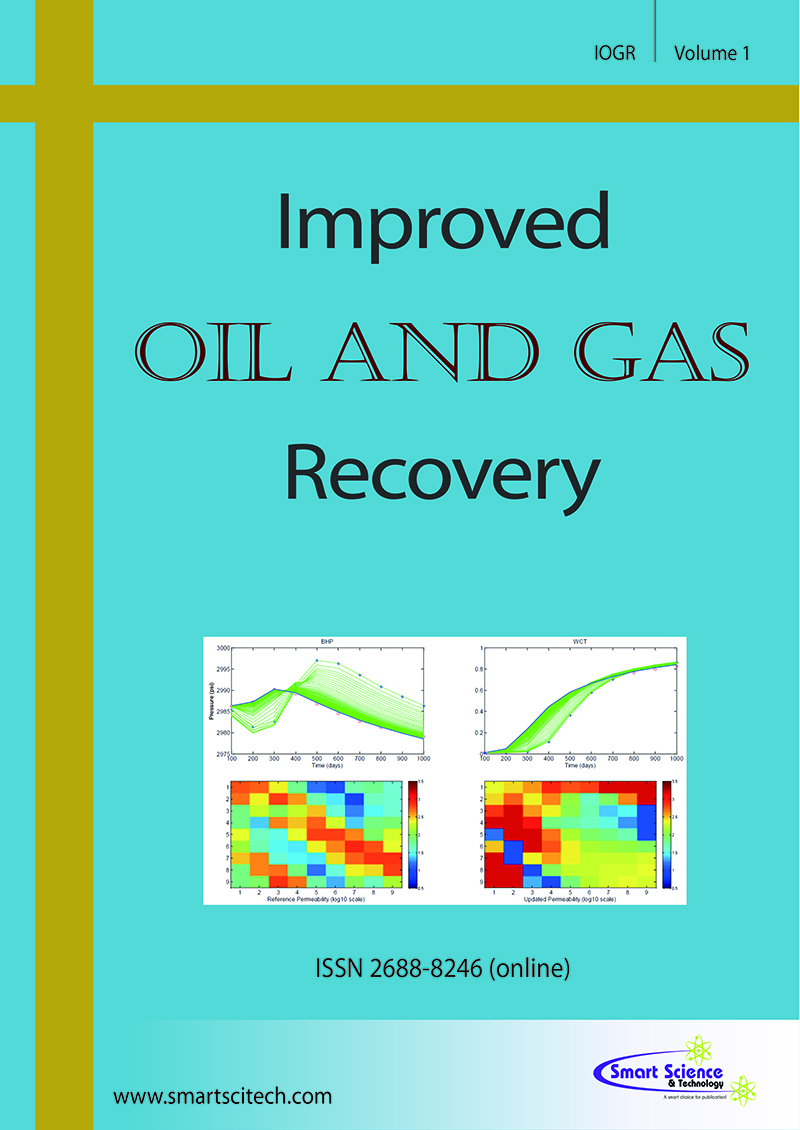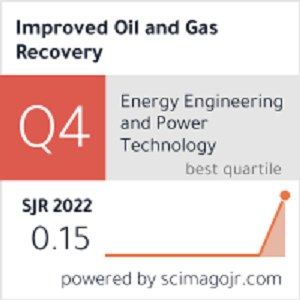Research on Oil-CO2-Water Relative Permeability of the Low Permeability Reservoir based on History Matching
DOI:10.14800/IOGR.1187
Abstract
Accurate prediction of the relative permeability curve provides the basis for study of the CO2 flooding effects (such as swept volume and oil displacement efficiency) and optimization of the CO2 flooding plan. Considering that the laboratory experiments are time-consuming and effort-consuming, and the experimental results are easily affected by external factors, a method of computing the relative permeability curve of oil-CO2-water multiphase fluid based on particle swarm optimization (PSO) was proposed. The typical CO2 flooding experiments in the low-permeability cores were performed, a multiphase flow numerical model was established in CMG-GEM, and 26 parameters of the model were optimized using the PSO method. The model fitting results are consistent with the experiment results, and the oil-CO2-water relative permeability, the oil-water capillary pressure and the gas-liquid capillary pressure of the low-permeability core were obtained. The validity of the model was verified in the research that the prediction from the numerical model is consistent with the laboratory experiment results. This study provides guidance for determining the oil-CO2-water relative permeability of the low-permeability core.
Downloads
Published
How to Cite
Issue
Section
License
Copyright (c) 2021 Fengli Zhang, Wenfeng Lv, Yongyi Zhou, Bochao Qu, Yawen He, Xinle Ma, Weidong Tian, Zhenzhen Dong

This work is licensed under a Creative Commons Attribution 4.0 International License.












